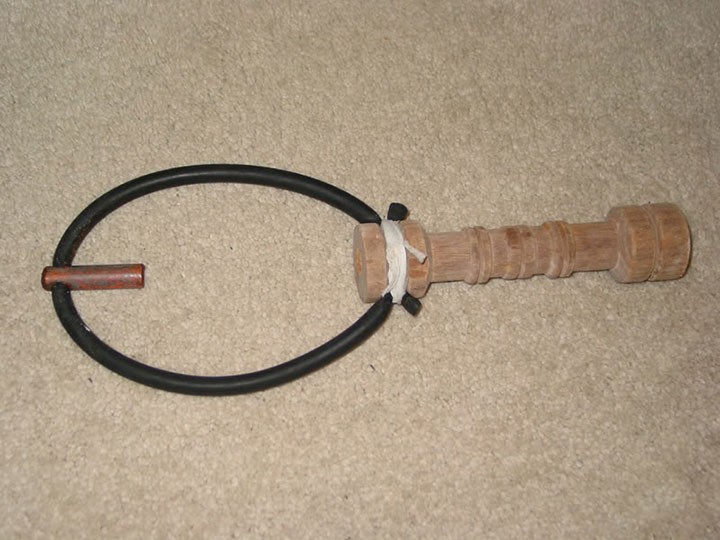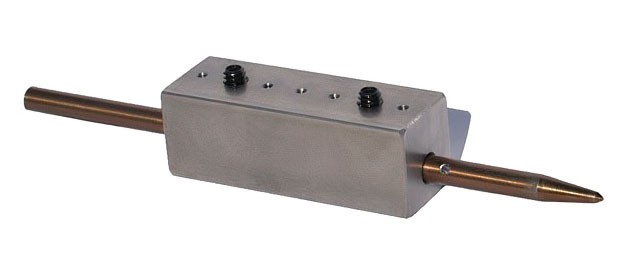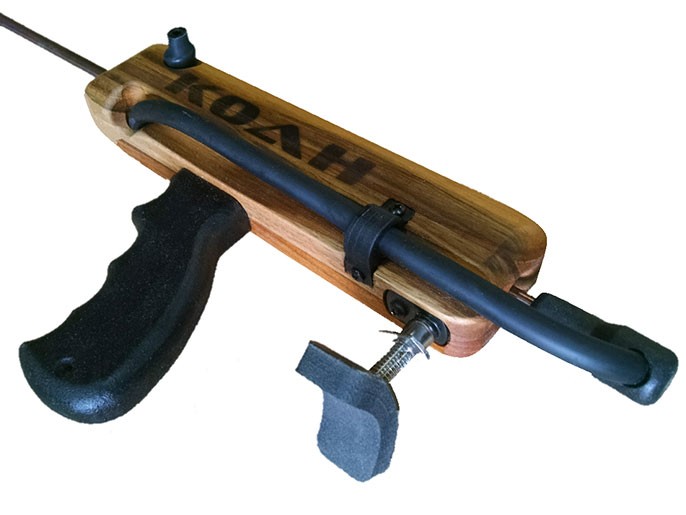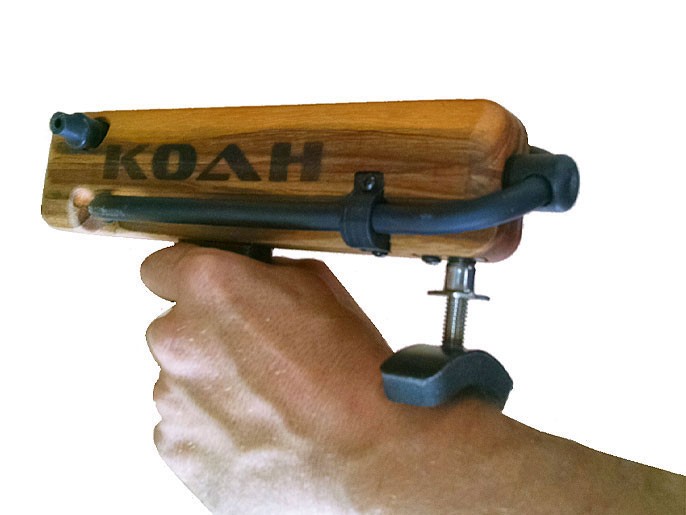Some of you may have seen this already, but I was asked to bring it over here. I’ve added a couple other small points and did a little organizing so hopefully its more coherent.
Someone had been asking some basic questions about slings and I ended up taking about an hour and typing up a bunch of info on slings vs polespears that I have compiled from years of using them in the Bahamas. Please let me know what you guys think...
Shafts
The most important difference between sling shafts and gun shafts is the size and placement of the flopper. On gun shafts the flopper is larger and set further back from the tip to account for the increased power generated from a gun. Typically sling shafts (and polespear floppers for that matter) will have the flopper anywhere from 1-2" back from the tip. This allows it to deploy with a less powerful shot that has less penetration.
In my opinion the RA sling shafts are the best because of the floppers and tri cut tip. The floppers are very strong and tuned for the best holding (somewhere around 60 degrees if remember correctly). There are other shafts out there made from from spring steel which are a little more bend resistant but from what I have seen usually have weak or not properly tuned floppers and pencil points. The reason I prefer tri cut tips is that I believe they provide better penetration through their cutting action rather than simply pushing through like a pencil point.
Range, Power, and Accuracy
In my opinion you can achieve much greater range with a sling than a polespear. The polespear is limited in range to the length of the pole, whereas slings are only limited by the length of the band and amount of stretch one's arms can generate. With a sling you can also use a different length or diameter spear depending on the situation to change your range and power. Smaller diameter spears will give you increased range and speed, which reduces drop and increases accuracy, however you will sacrifice some on stopping power. Thick diameter spears will give you more stopping power and shaft drop but less speed and range.
Loading
Polespears do have the advantage of reloading quicker, however slings can be reloaded and refired underwater relatively quickly with some practice. For slings one other advantage I see is that you don't have to pull back the rubber and exert energy until just before you want to shoot something. This also allows you to hold the sling with less aggressive body posture, luring the fish in until the last second. Polespears you really need to have cocked before you decide you want to shoot something because of longer loading loading time and longer length. This burns up extra oxygen on the dive and makes it harder to track and swing in the water using one hand.
To load a sling, the spear notch is drawn straight back while simultaneously pushing the hand on the handle forward, extending the rubber to the maximum length your arms will allow. I am right handed and use my right hand to hold the notch and left on the handle. For lining up where the shaft is going you basically turn your head to look straight down the arm that is holding the handle.
When hunting in holes and you have your head stuck up in there looking for the fish you can easily load the sling one handed by placing your dominant hand at the back of the sling handle around the shaft (this is with spear already notched) and using a rock to push up against to load the sling. In order to hold it cocked like this you must make a fist around the shaft in order to hold it from sliding. Then you simply aim it like a pole spear or my personal favorite, the pool cue shot, and release.
Floatlines
As for attaching a line to the sling, this can be done. Usually it will require drilling of the shaft since most sling shafts don't come drilled. There are many different ways to rig this. A hole can be made at the rear of the shaft with shooting line run up and out of the spear hole in the sling handle. This may require that the crimp or knot be made past the point of full stretch so that it will not get hung up when exiting the handle. The other option is to drill the hole past the point of full stretch and have the shooting line not threaded through the handle. You want to use a light line so there is minimal drag and it can be anchored to the sling or setup to a floatline.
Shooting
A sling not rigged with a shooting line would me more ideal for shooting fish on the bottom or in holes. For this case the shot angle becomes important. You need to be shooting from above and behind the target so that when you hit the fish and he tries to swim away he is only going to be pushing against the flopper. Also the weight of the shaft above the fish will put some pressure on it and aid in tiring it out.
Not every fish has to be stoned... I got this 60lb grouper by putting one shaft through the gill plate, which only pissed it off, and then following it up with another just behind the first on the next dive. With a little bit of hurting and the drag of the two shafts he stalled for just a moment after the second shaft hit him and I bear hugged him and brought him to the surface.
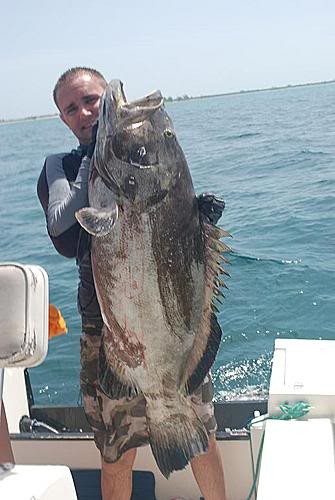
Don't mistake my praise of slings for being a put down of polespears. Polespears definitely have their own niche. For my type of diving and in my opinion polespears are most effective for free swimming fish off the bottom and smaller reef fish. I also like to carry a very short (3-4') polespear for extracting holed up fish. Often times fish will get up inside a hole where long polespears and sling shafts just can't contort to get a shot off, that's when the stubby comes out. One other advantage for slings on reef fish is the risk of bending a shaft. I'd much rather bend a $28 shaft on a nice fish than risk ruining an expensive polespear. On way to avoid this with polespears is to use a slip tip. While this will avoid damaging pole spear itself you still run the risk of damaging the slip tip when hunting fish on the reef. I’ve also found that holed up fish can be sometimes harder to extract when attached to a slip tip rather than a flopper, due to the additional leverage that can be gained by having a solid shaft attached to the fish.
Sling Choice
In my opinion the style of sling with the perpendicular handle aren't very good. It does seem like it would be easier to draw back and handle but what it ends up doing is putting your supporting hand perpendicular to the direction the shaft is traveling. When the rubber is released this will cause a torque around that point causing the spear to be deflected by the resulting movement of the hand on that handle.
I like just a simple teak handle with a brass notch.
